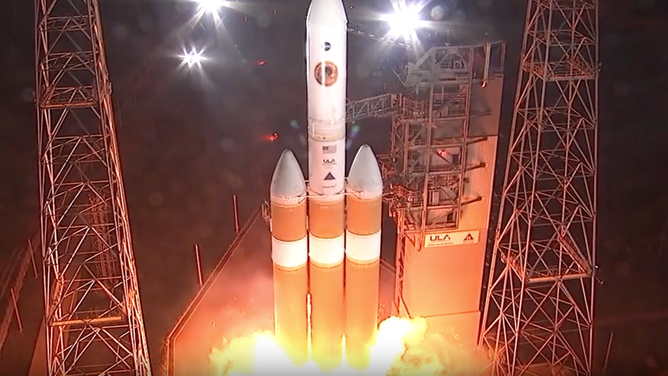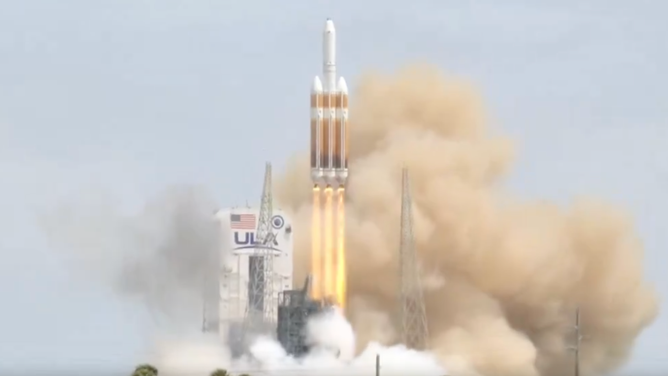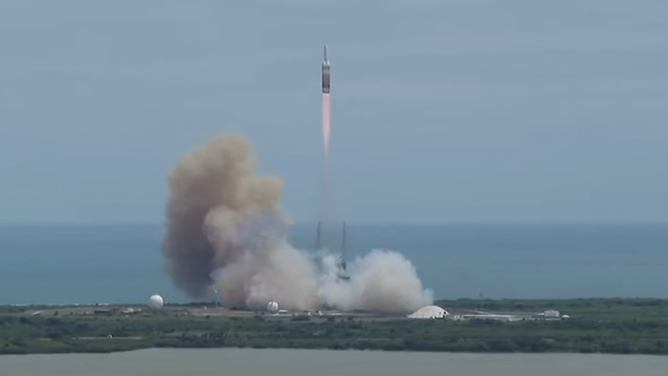'Most metal of rockets' Delta IV Heavy soars for final time, launching top secret mission
The launch marks the end of a 60-year history with the Delta rocket family. Delta IV Heavy was known as the "most metal of rockets" because of its fiery display during launch.
Final ULA Delta IV Heavy rocket roars to life
A United Launch Alliance Delta IV Heavy rocket launches the NROL-70 mission for the National Reconnaissance Office from Launch Complex 37 in Cape Canaveral, Florida. The launch marks the final mission for the Delta rocket family after a 60-year history.
CAPE CANAVERAL, Fla. – It wouldn't be a final Delta IV Heavy rocket launch without the wait. On Tuesday, United Launch Alliance completed the bittersweet sendoff, marking the last mission of the Delta rocket family, as it carried a national security payload into orbit.
At 12:53 p.m. EDT, the engines ignited, carrying the triple-booster rocket off the pad from Florida at Cape Canaveral Space Force Station Launch Complex 37. Inside the Delta IV Heavy nosecone or fairing was the National Reconnaissance Office NROL-70, a national security mission with few details shared with the public.
AMERICA’S TOTAL SOLAR ECLIPSE DAZZLES COUNTRY AS MILLIONS SCRAMBLE TO FIND BEST VIEW
This was the second launch attempt for the swan song of the 233-foot-tall rocket. ULA first tried to launch the NROL-70 mission on March 28, but an issue with a pump on the fuel pipeline to the launchpad caused the countdown to end in a scrub.
The weather was beautiful on Florida's Space Coast for the afternoon launch. The 45th Weather Squadron forecast was 90% favorable, with cumulus cloud cover the primary concern.
'Most metal of rockets'
The Delta IV Heavy is known as the "most metal of rockets" because of its fiery display during launch. As the rocket soared into the blue sky above the Space Coast on Tuesday, flames could still be seen licking at the boosters.
Ahead of the Delta finale, ULA CEO Tory Bruno explained why the rocket "lights itself on fire before it goes to space."
The rocket uses a half-million gallons of fuel and has three side-by-side booster cores, each with Aerojet Rocketdyne RS-68A engines that provide a combined 2.1 million pounds of thrust at liftoff. To prepare the rocket's RS-68A engines, very cold cryogenic hydrogen propellant flows into them before they ignite.
"Hydrogen is lighter than air, so after it flows through the engine and the flame trench, it then rises," Bruno said.

ULA's Delta IV Heavy rocket launches from Cape Canaveral, Florida sending NASA's Parker Solar Probe into space on Aug. 12, 2018.
After the main fuel load is dropped and the engines ignite, the flame travels where the hydrogen clings to the booster's side.
The Delta rocket program's history dates back to when NASA started it in the late 1950s.
WATCH: LUNAR SHADOW RACES ACROSS AMERICA DURING SOLAR ECLIPSE AS SEEN ON NOAA SATELLITE
The Delta IV Heavy would tower above the first Delta rocket, which stood 90 feet tall. After a failed first launch in 1960, the Delta rocket quickly began establishing a history of successful missions. Versions of Delta rockets launched eight missions to Mars for NASA, including Spirit and Opportunity rovers.
The Delta IV Heavy rocket we know today began launching in 2002. All but four of its 16 missions were for the NRO. The penultimate liftoff of the rocket happened in June, launching the NROL-68 mission.
ULA is replacing the Delta Heavy and its workhorse rocket, the Atlas V, with the new Vulcan rocket. However, before the Atlas V retires, ULA will launch Boeing's first astronaut mission to the International Space Station.
ULA and Boeing are targeting May 6 for the Crew Flight Test of Boeing's Starliner spacecraft, launching NASA astronauts Suni Williams and Butch Wilmore to the space station.




